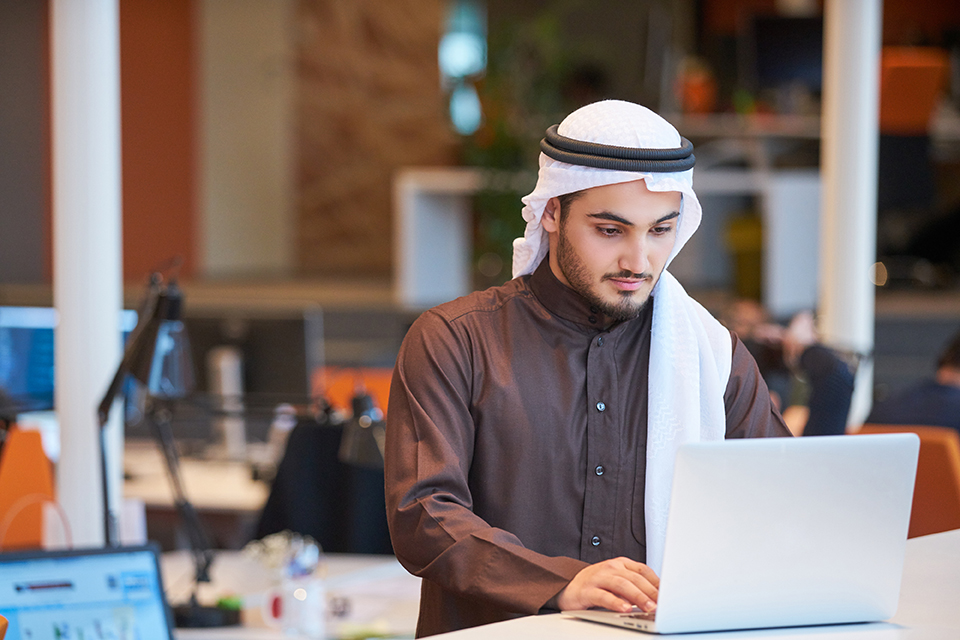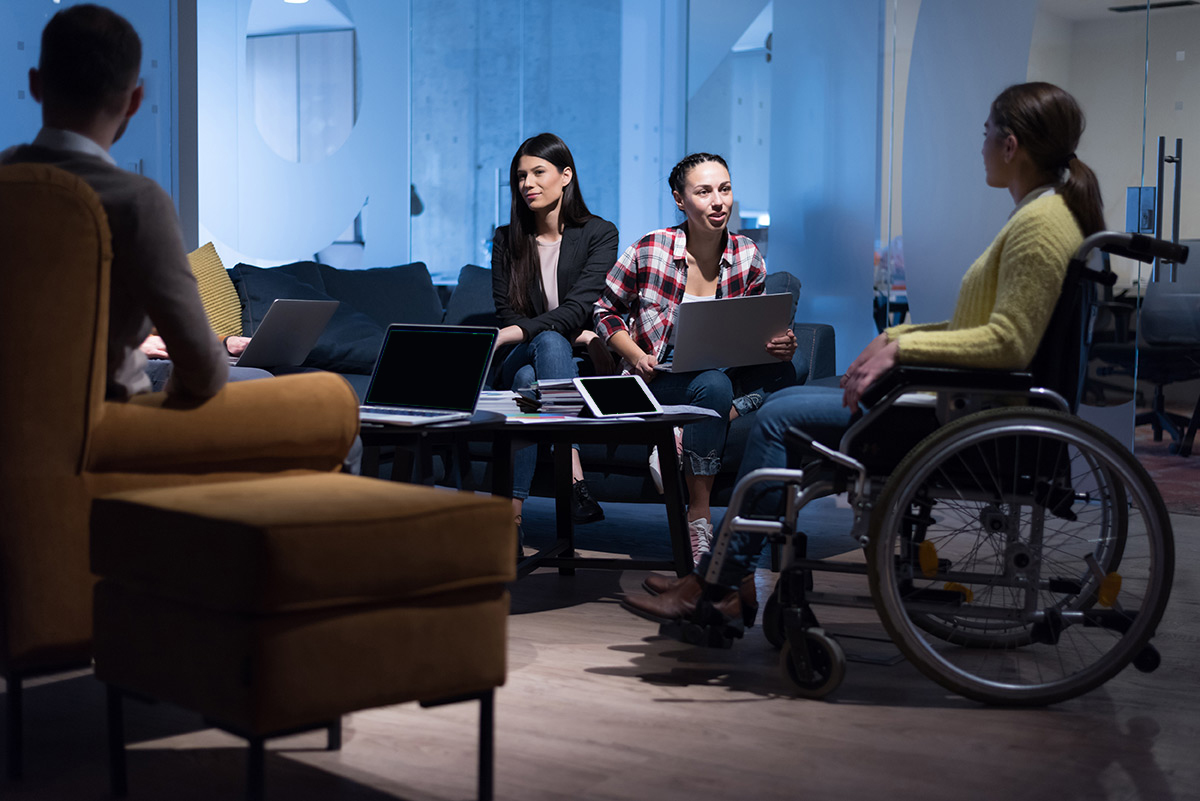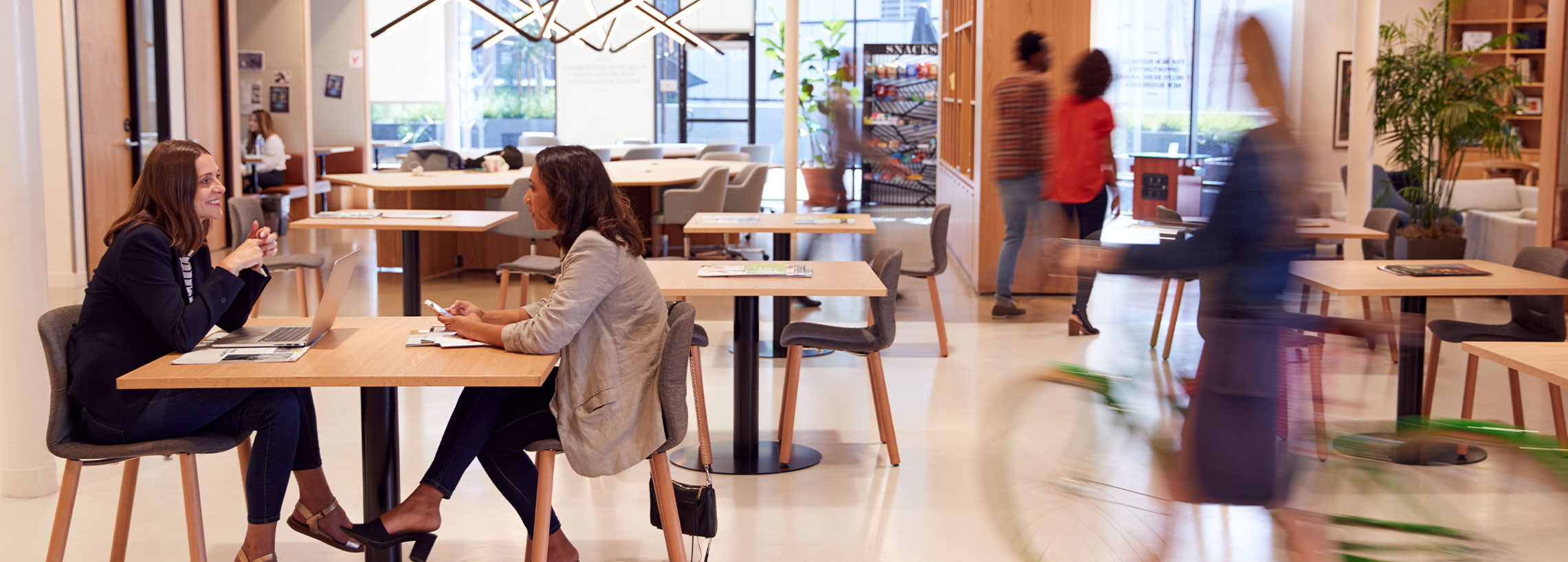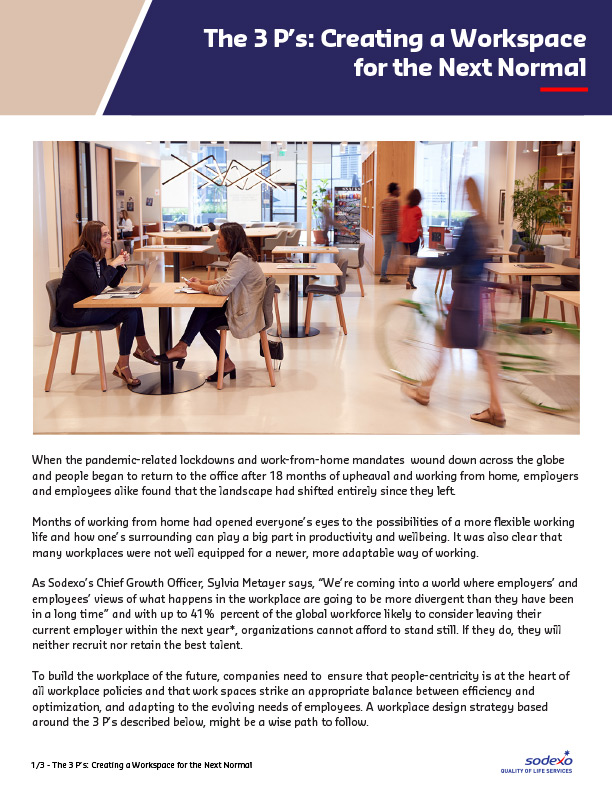To build the workplace of the future, companies need to ensure that people-centricity is at the heart of all workplace policies and that work spaces strike an appropriate balance.
When the pandemic-related lockdowns and work-from-home mandates wound down across the globe and people began to return to the office after 18 months of upheaval and working from home, employers and employees alike found that the landscape had shifted entirely since they left.
Months of working from home had opened everyone’s eyes to the possibilities of a more flexible working life and how one’s surrounding can play a big part in productivity and wellbeing. It was also clear that many workplaces were not well equipped for a newer, more adaptable way of working.
As Sodexo’s Chief Growth Officer, Sylvia Metayer says, “We’re coming into a world where employers’ and employees’ views of what happens in the workplace are going to be more divergent than they have been in a long time” and with up to 41% percent of the global workforce likely to consider leaving their current employer within the next year*, organizations cannot afford to stand still. If they do, they will neither recruit nor retain the best talent.
To build the workplace of the future, companies need to ensure that people-centricity is at the heart of all workplace policies and that work spaces strike an appropriate balance between efficiency and optimization, and adapting to the evolving needs of employees. A workplace design strategy based around the 3 P’s described below, might be a wise path to follow.
1.Place
Designing spaces that are adaptable to everyone – and for all preferences and work patterns will be key moving forward. “Start bringing employees into the conversation about the design of their workspace”, says Metayer.
Some people thrive in open-plan office spaces, with lots of noise and collaboration, others prefer a quieter, more introspective environment in order to be more productive. In reality, most people would want the option to choose between different atmospheres for different tasks or times of the day. The key is flexibility and to find a healthy balance between the requirements of the business and the needs of a workforce that may no longer need to be at their desk for the entire working week. This may provide opportunities to use space in a different way, perhaps by sharing work stations and having more more adaptable configurations in the office.
All workspaces need space for collaboration (meeting rooms, break-out rooms and 1-2-1 spaces) but we also need to be aware of the ongoing requirements of social distancing, a concept which looks set to be with us for the medium to long-term.
2. People
It’s always been the case that people are what makes an organisation. But now it seems clear that there’s been a clear shift in attitudes. Increased opportunities for labour mobility means that employers are obliged to make the workplace somewhere staff actually want to be, and where they can be at their most productive. If not, staff will simply take their skills elsewhere.
Organisations need to find effective ways of asking their employees what they want in the workplace and find ways to provide it. People now expect a more adaptable approach, so businesses need to consider what their staff want and what they can offer to encourage people to stay and be at their most productive. There’s now a widespread recognition that expecting people to stay at their desks and requiring them to be on site at all times may not be the way to get the most out of them.

3. Purpose
It’s important that organisations make CSR a core part of their business strategy and not merely a box-ticking exercise and something to put in their annual reports. Authenticity of purpose and a genuine desire to look after employees’ physical and mental wellbeing is vital. As is the way a business interacts with the wider community and the environment. Creating an atmosphere where diversity and inclusion are genuinely valued and differences are catered for demonstrates commitment to creating a better future. Designing a workspace with this ethos in mind from the start is important to achieving an inclusive workplace.

Bearing these 3 P’s in mind when re-designing a work space for the next decade can help create a company culture that attracts and retains the talent required for success.
- 2021 Work Trend Index: Annual Report - Microsoft
https://ms-worklab.azureedge.net/files/reports/hybridWork/pdf/2021_Microsoft_WTI_Report_March.pdf

